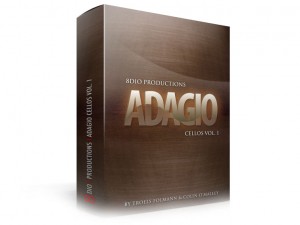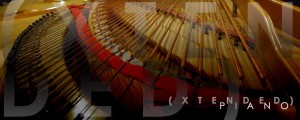A composer’s guide to sample libraries
 When it comes to sound libraries for digital samplers, two names stand out – 8DIO and Soniccouture.
When it comes to sound libraries for digital samplers, two names stand out – 8DIO and Soniccouture.
Both create sound libraries for Native Instruments’ Kontakt sampling software, and both make libraries of massive versatility and unique value.
As a composer who writes contemporary classical music, as well as various soundtrack and experimental styles, I’m looking for libraries that sound like the real thing, are highly expressive and sonically engaging.
8DIO has of late been issuing libraries of symphonic instruments that are second to none for sound quality, versatility and playability. When they take on an instrument they record it using the finest microphones, preamps and techniques. Moreover they record each instrument with virtually every articulation a player can perform, at close and at various distances. Their round robin arrays ensure that each time you trigger a given key within the same articulation set – a muted string, for example – each key stroke will produce a slightly different variation of that instrument playing that note in that style. The result is a series of sound libraries one can play from a keyboard that sound as real and colorful as the original instrumentals.
8DIO also features trigger keys, usually on the lowest register of the keyboard, that can switch articulations for you. From one bow pressure to another, or into harmonics, different phrasing, etc., one can move smoothly and quickly between instrumental colors.
These are not the cheapest sound libraries on earth, but they are considerably cheaper than those of Vienna Symphonic Libraries and to my ear, easier to use and more authentic sounding.
 I turn to Soniccouture when I’m looking for the unusual. The company’s Glassworks collection is particularly noteworthy, featuring high quality samples of Harry Partch’s Cloud Chamber Bowls, Glass Armonica and the Cristal Bachet, all of which add unusual color and texture to my pieces.
I turn to Soniccouture when I’m looking for the unusual. The company’s Glassworks collection is particularly noteworthy, featuring high quality samples of Harry Partch’s Cloud Chamber Bowls, Glass Armonica and the Cristal Bachet, all of which add unusual color and texture to my pieces.
Similarly its extended piano library of plucked, bowed, muted, mallet and SFX piano sounds is one of the best available. Its EP73 and Broken Wurli electric piano collections contain both routine and exotic sounds one might never expect to hear from such a familiar instrument. They also have libraries for the Ondes Martenot (a weird early cousin of the Theremin), Balinese Gamelan and all manner of exotic percussion and wind instruments. When you’re looking for something a little “out there,” Soniccouture is your go-to sound library distributor.
No, even the best sound libraries are no substitute for a great player, and never will be. But they allow a composer the ability to mock up the sound of a piece to a good approximation of what the final piece might sound like, and to make appropriate, knowledgeable choices about what articulations will work best in their pieces.
My go-to sample playing software is Native Instruments’ Kontakt, though I also use and love MOTU’s Mach V 3. But there are far more libraries specifically geared toward Kontakt, much as there were for Gigasampler back in the day. And while both Kontakt and Mach V will play virtually every sound library on the market (including Gigasampler), Kontakt loads about 10 times faster than Mach V, even in MOTU’s Digital Performer sequencer.
